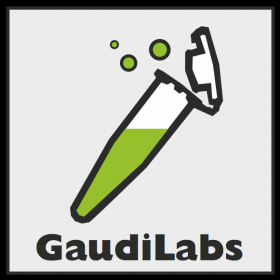Let’s build a spectrometer!
These step by step instructions show you how to build the spectrometer from the “3D Printable Fiber Spectrometer Kit” for visible and infrared Spectrum. First have a look at what is in the kit and if you got all the parts. Do not take the parts out of the bags yet to keep them clean.
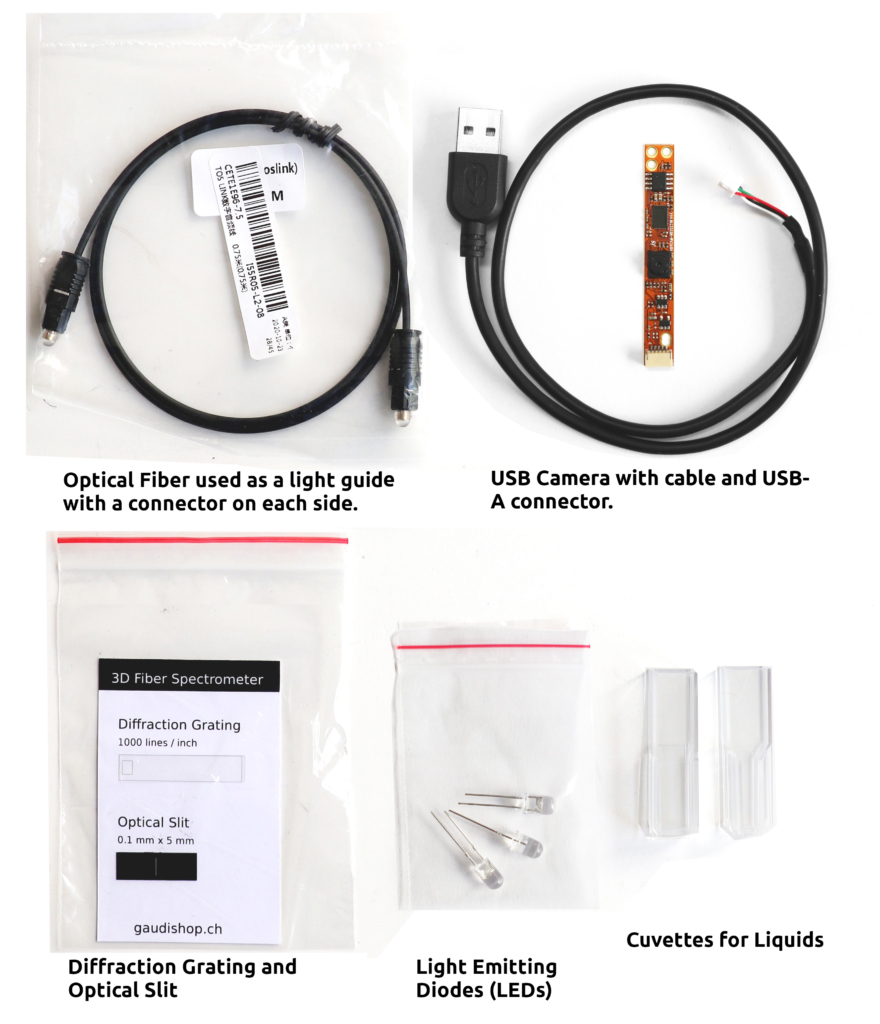
The spectrometer is a scientific instrument used to separate and measure components of light. The spectrometer can separate white light and measure individual bands of color, called a spectrum (rainbow pattern). As the spectrometer is an optical instrument we need to precisely guide the light though the optical components and make sure to keep unwanted stray light out. For this let’s first print a solid black case.
Printing the case
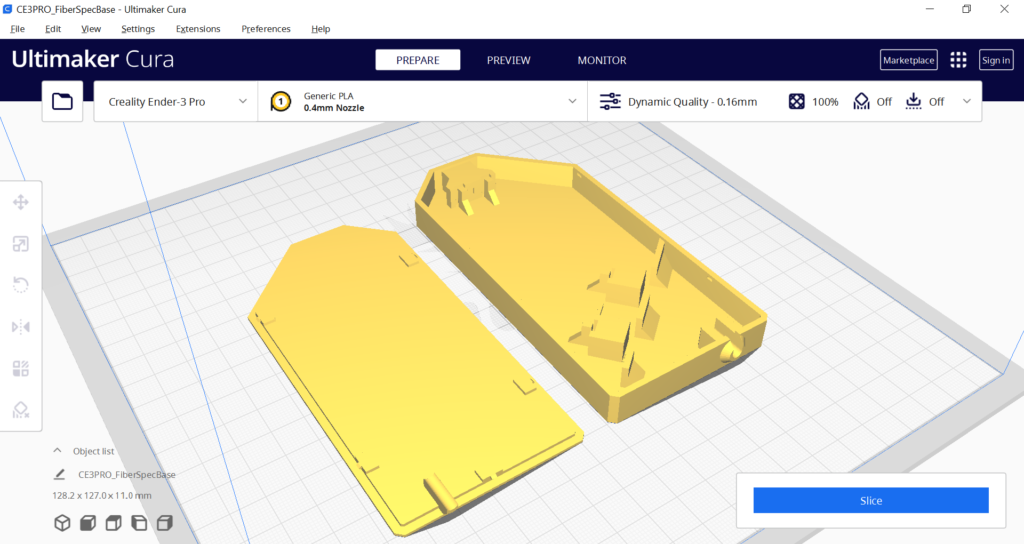
The case can be printed on any recent 3D printer using black PLA filament. The case consists of a base that holds the components (File: FiberSpecBase.STL) and a lid to keep stray light out (File: FiberSpecLid.STL). Download the parts from the GitHub Repositiory and print them on your printer.
If you do not have access to a 3D printer you can go to your local fablab, or order the 3D printed parts online from imaterialise , shapeways or any 3D printing service. Be sure to order the parts in solid black.
Recommended printer settings are:
- PLA black filament (Matte black is the best)
- 0.4mm nozzle
- 0.16 or 0.2 mm layer height
- 100% infill
- heated bed
- size 100%
If your print bed is big enough you can print both parts at once. Arrange them as shown in the picture.

The printed case should look like this. Depending on you print quality you will need to remove some burrs or strings.
You can now test to see if the optical fiber connector fits. To do this, you can pull off the white protective cap from one end of the fiber cable, and insert it into the 3D print. It may be a bit hard at the beginning and get more loose thereafter. If the fiber does not fit, try tweaking your printer settings by choosing a finer print quality, reducing the layer height or reducing the extrusion rate. Take out the fiber cable and put the protective cap back on. We will reinstall it in a later step.
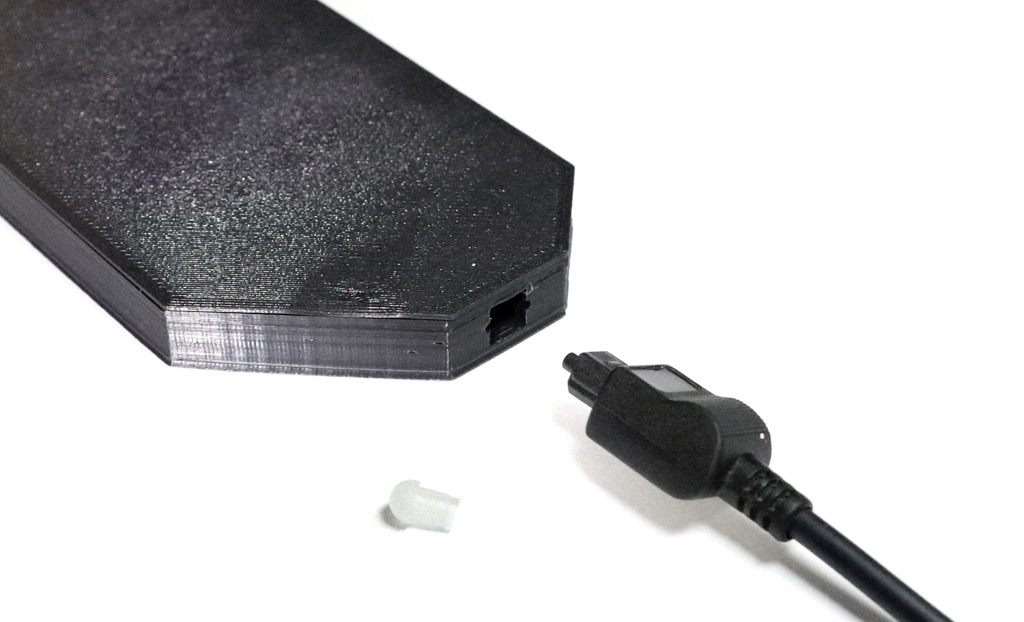
Installing the camera
Now we can start installing the components. Let’s start with the camera.
Remove the camera from the bag and connect the cable using the small white connector. Plug it in carefully as shown on the picture.

The focus of the small camera is pre-set to the right focal length for the spectrometer. Do not turn the lens unless you want to re-focus the camera.
Next insert the camera into the base part of the case as in the picture. No screwing or gluing is needed. The thin camera circuit board is held between the 3D printed posts. Make sure that the camera is centered and is pressed all the way in to the bottom of the case.
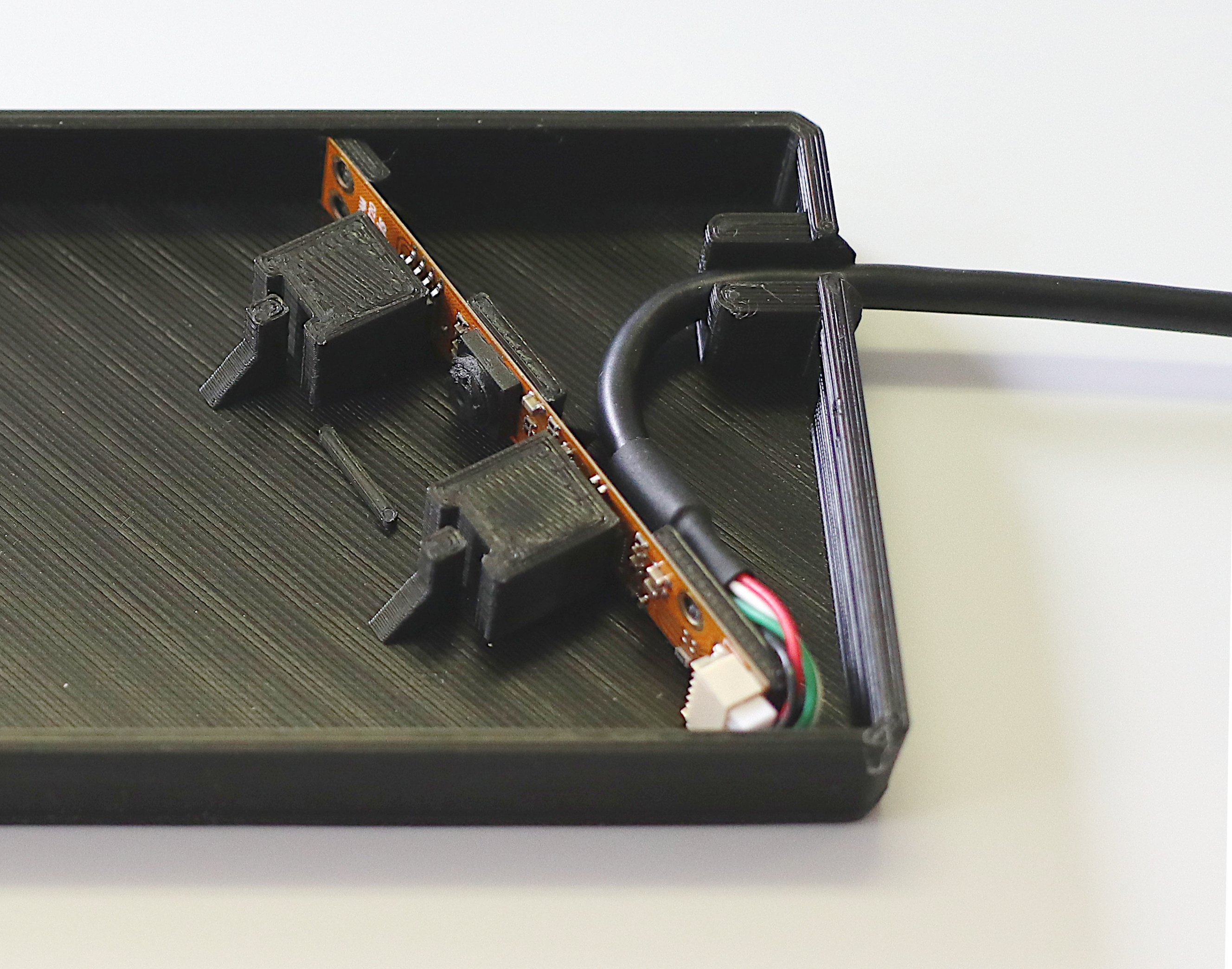
Then bend the cable and press it into the cable fixture.
The Diffraction Grating
The diffraction grating is an optical component that splits and diffracts light into several beams traveling in different directions. Included in the kit is a transparent foil with a microscopic periodic structure that acts like a prism. You can now install it in front of the camera. Take the diffraction grating from the card by holding it on one side. Do not touch the center of the foil as the microscopic structure should remain as clean as possible. Now insert it in the appropriate holder in the case just as you did with the camera. See picture below.
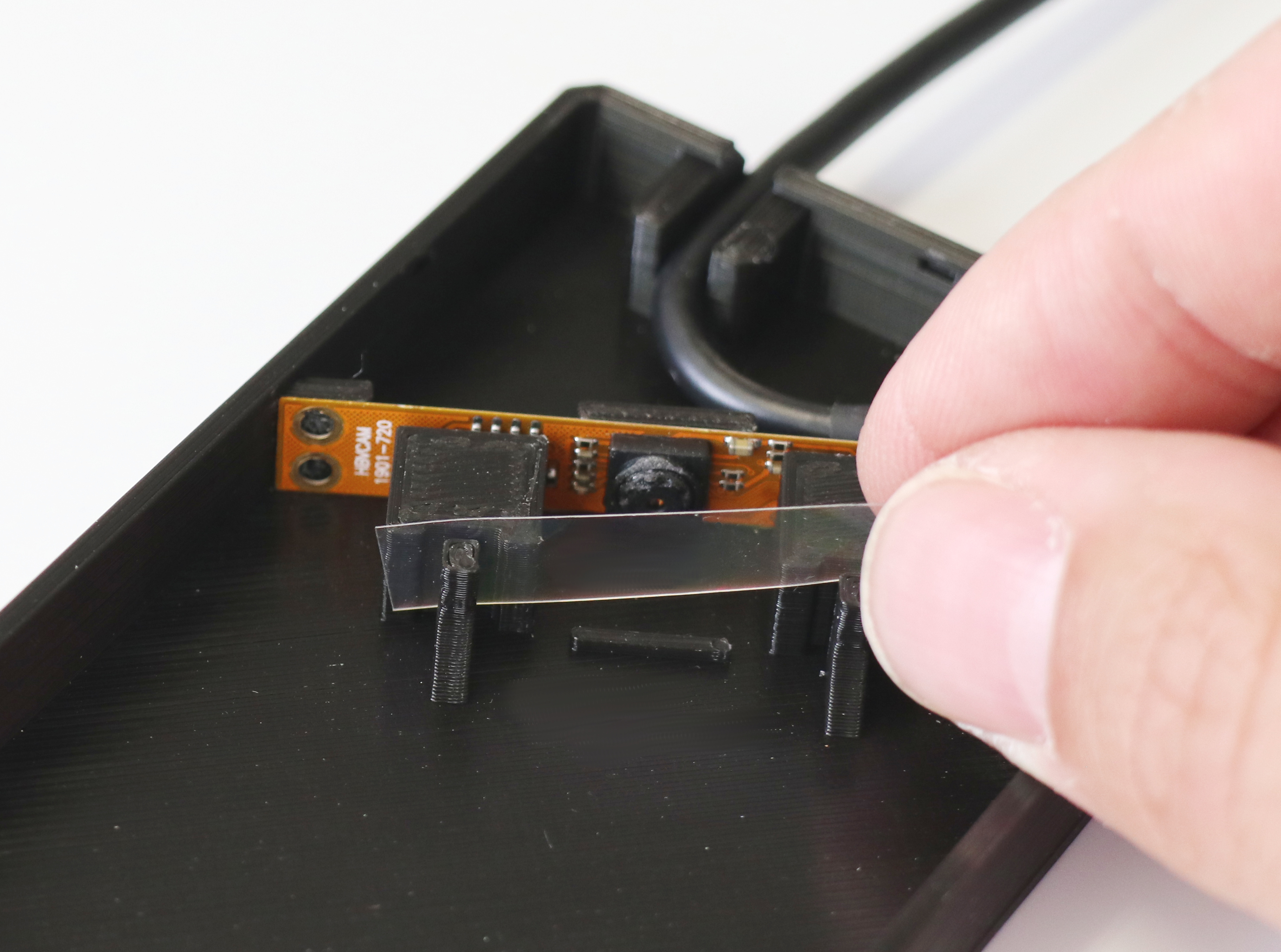
Again make sure the film sits straight, centered and all the way down. The ridge on the floor of the case keeps it straight and parallel to the camera.
Now you can close the lid for a first test. The lid should fit in snug and hold with the clips. Again no screws needed and you can always re-open the case easily.
First Rainbow Spectrum
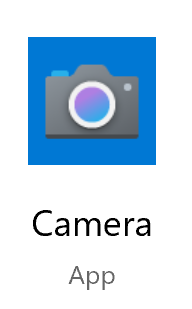
You can now plug in the USB cable to your computer to make a first test. On you computer just use a Web-Cam software to see the image. On Windows 10 use the pre-installed “Camera” software. On Mac you can use the “Photo Booth app”. On Linux “guvcview” is a good and free software. With the app started you might need to switch the camera (to USB2.0 UVC HD Webcam) to see the spectrometer. At first you might just see a black screen. Now point the spectrometer towards a lamp or to the sun and you should see the rainbow spectrum.
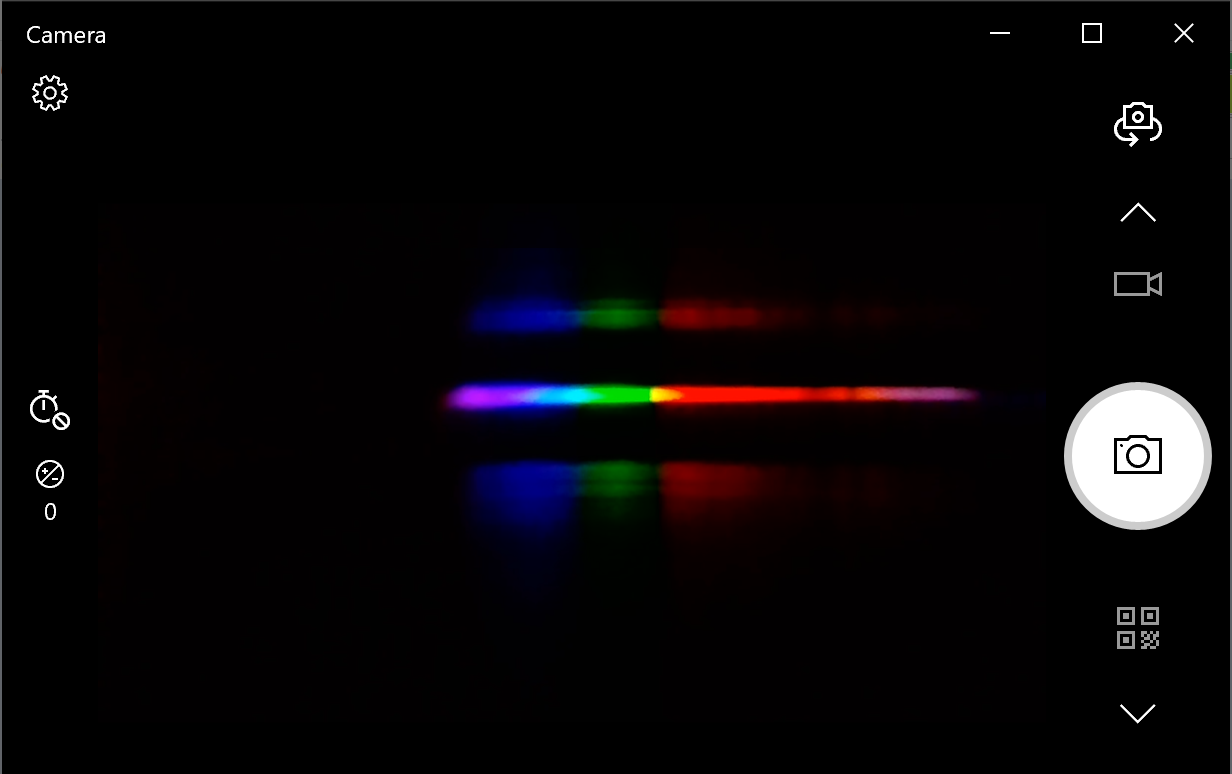
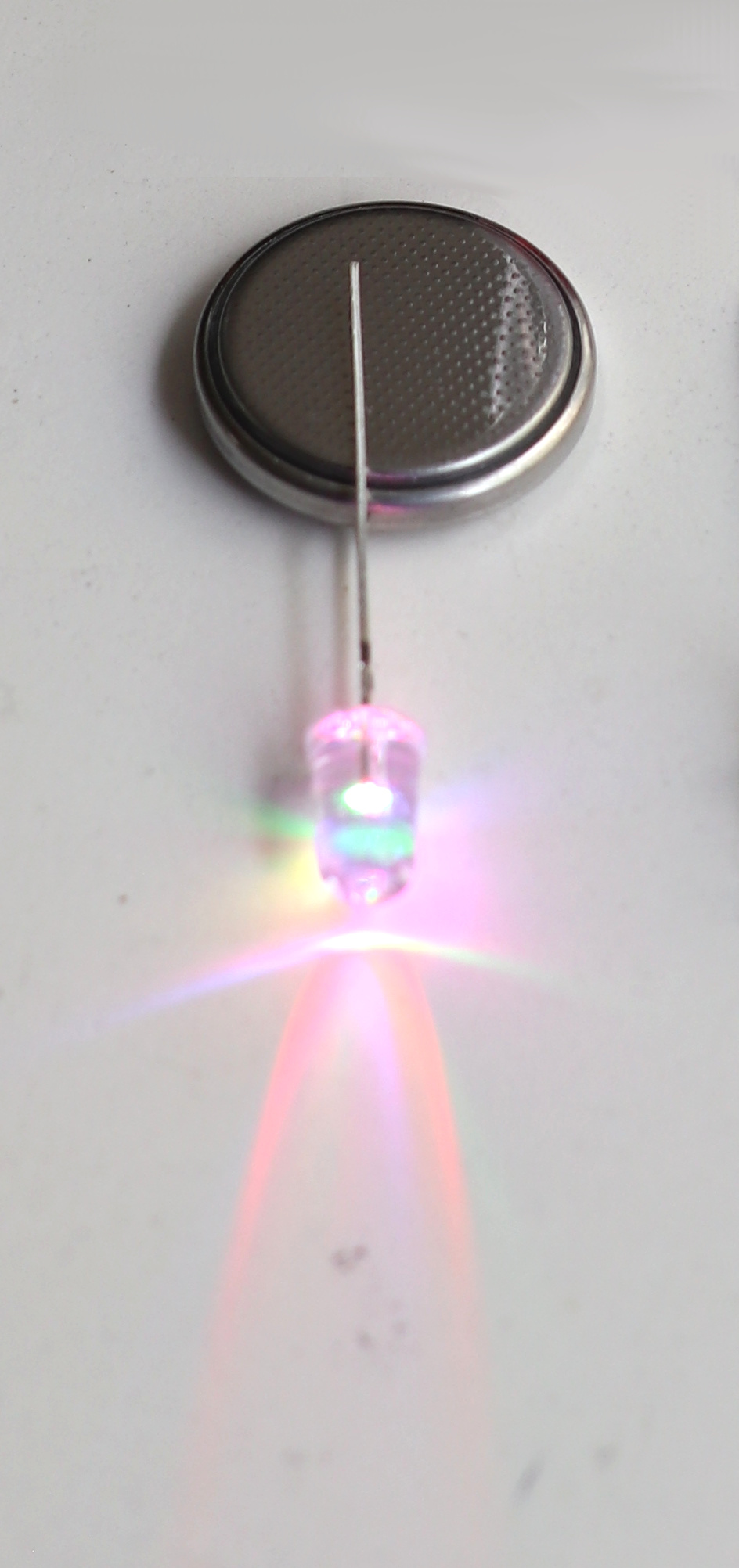
The rainbow spectrum shows the different wavelength components of the light. White light shows the full spectrum. If you point the spectrometer towards a colored light you should only see the wavelength contained in that light source.
The kit contains a white, a color changing and an infrared light emitting diode (LED). You can point the different lights to the spectrometer to see the different spectras. Pinch a 3V coin battery (not included) between the two legs. The longer leg goes to the plus side.
Optical Fiber
Your spectrum may look blurry. To improve the resolution you want to reduce the optical aperture of the spectrometer. To do this you can install the optical fiber. It has a smaller opening and focuses the light beam more. The fiber will also allow you to point more precisely to the source you want to measure. Take off the protective caps and press one side into the opening on the case, as we did before. The other side you will point at your light source.
To get an even better spectral resolution you can now install the optical slit.
Optical Slit
Good spectrometers narrow down the incoming light with an optical slit. The slit with a precisely defined width in a black mask is installed at the light entrance port of the spectrometer. The slit included in the kit is printed with of 0.1mm on a foil. Install it as you did with the diffraction grating in the case. See picture below on how to.
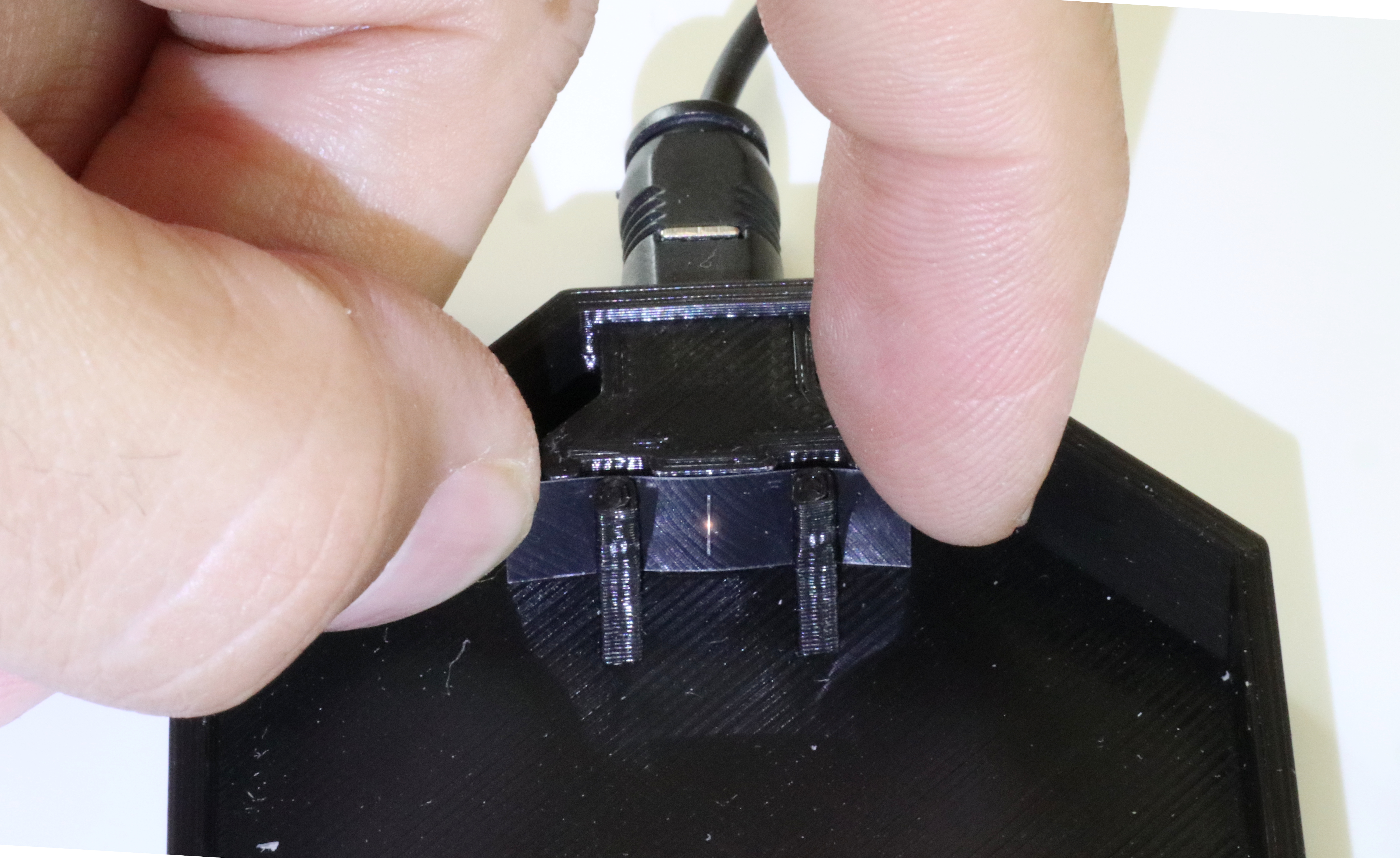
With the case off, shine your white LED through the optical fibre. Position the slit in front of the optical fiber and align to get the maximum light through the slit.
Capturing calibrated spectra.
To get calibrated spectral information with a nanometer units scale on the horizontal axis you can use the Online Viewer for 3DFiberSpectrometer. This is an open source spectrometer viewer developed by GaudiLabs. Make sure to allow your browser to access your camera.
Once you have an assembled spectrometer connected to your computer or smartphone load the website. You’ll then be able to choose the camera of your spectrometer, calibrate it, analyze and save spectra.
Calibrating the Spectrometer
The simplest way to calibrate your device is to point it at a fluorescent light, which have a very particular set of peaks. After setting the reading line, slide the markers, labelled 1 and 2 at the bottom of the graph, to align them with the first (434nm) and last (611nm) big peaks of the spectral curve, as in the image below.
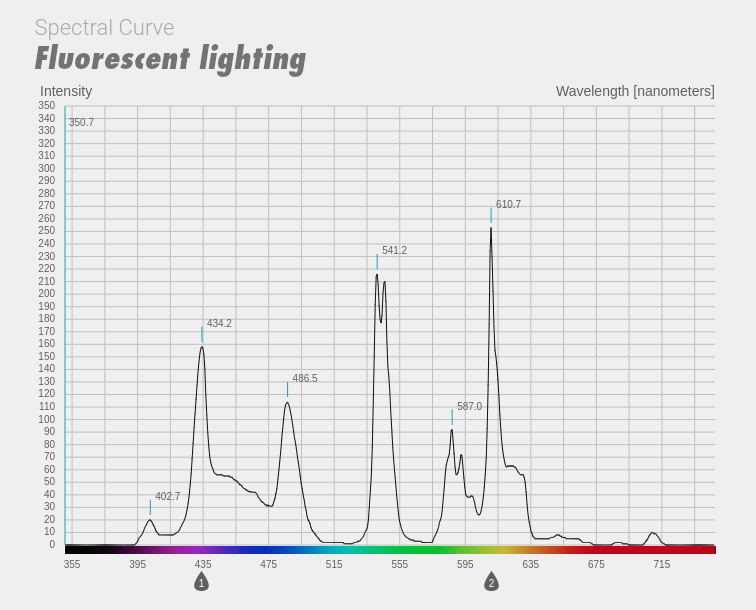
You can check if it is calibrated by measuring the infrared LED, which should be around 950nm. Turn on ‘show peaks’ to see the value.
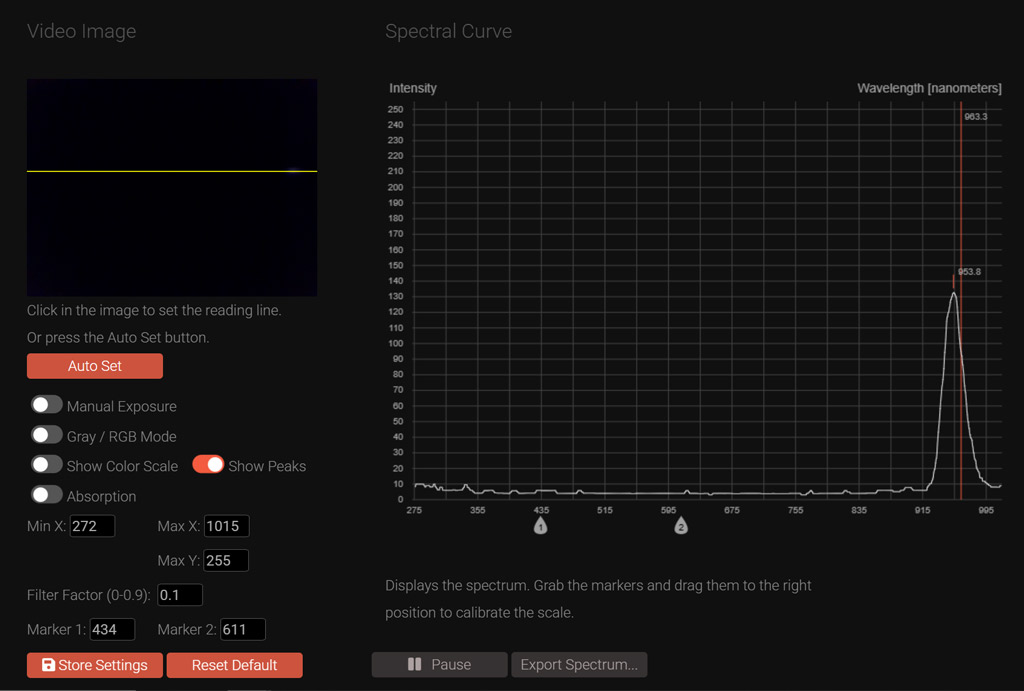
To get to know the interface, try measuring the color changing LED. Here you can watch the different frequencies change in real time. Turn on the ‘Gray/ RGB Mode’, and play with some other settings, like the range of the axes.
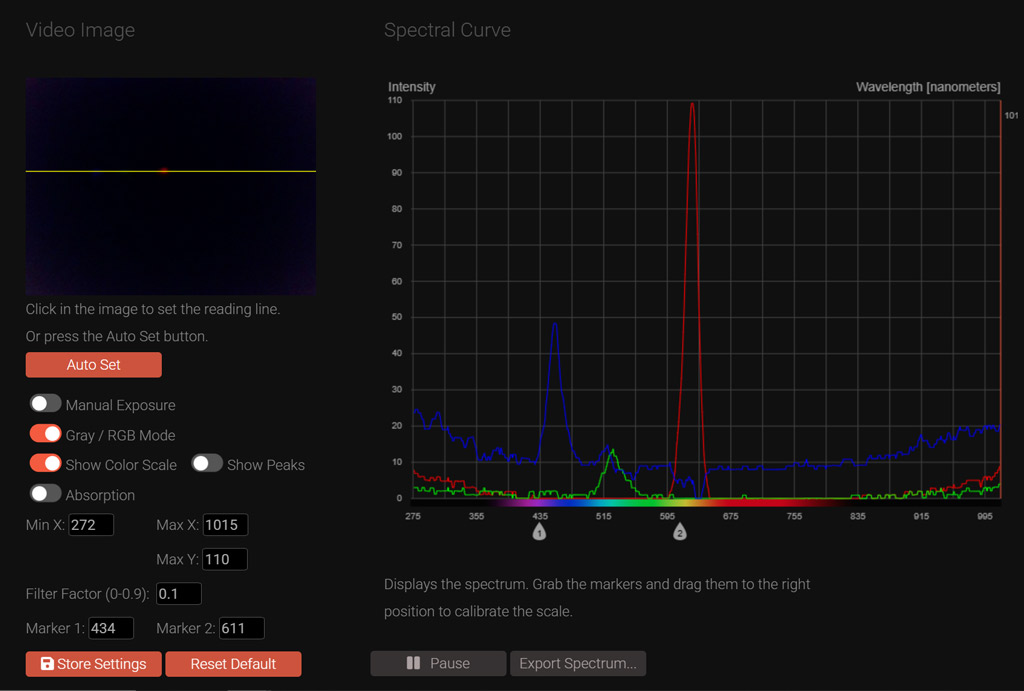
Measuring absorption with the cuvette holder
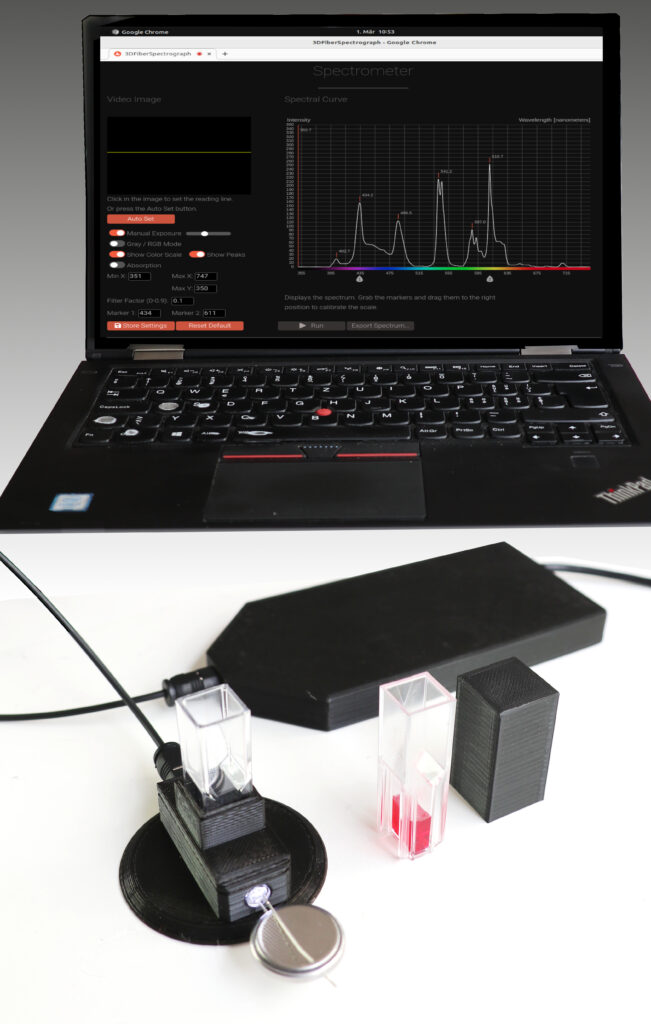
The big advantage of the optical fiber spectrometer is that you can easily connect the fiber to various different light sources and sample holder. A cuvette holder is a commonly used add on for absorption measurement in liquids. Let’s 3D print one.
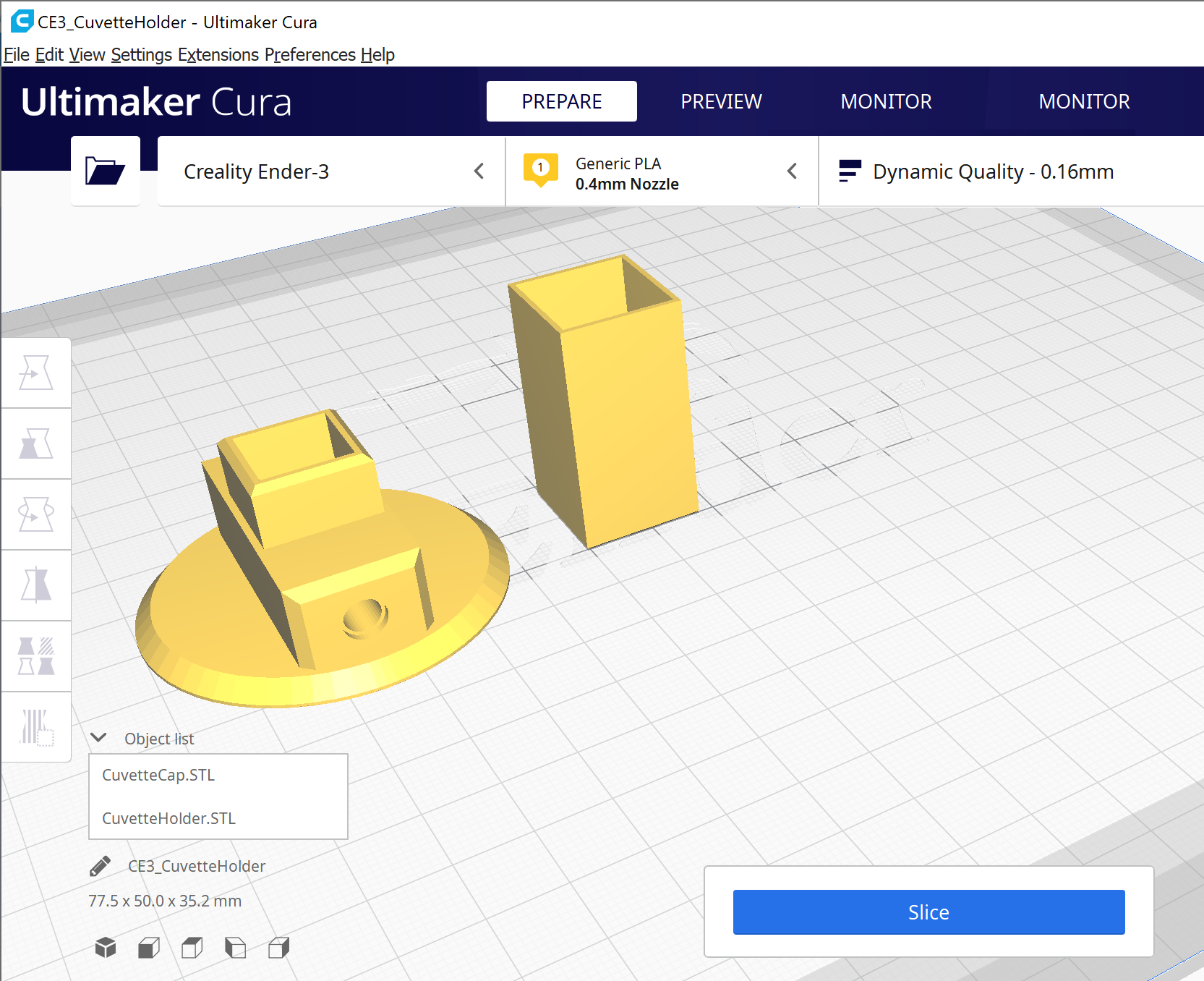
Print the holder CuvetteHolder.STL and the CuvetteCap.STL with black PLA as you did for the case.
Once printed you can connect the optical fiber to the cuvette holder and insert the white LED with the coin battery in the hole on the other end. Using the cuvette holders included in the kit you can now measure the light absorption of liquid. The cuvette has two optically clear windows and a 10mm long reservoir for the liquid to get accurate measurements. Make sure to insert the cuvette in the correct orientation. Place the Cuvette Cap over the cuvette to prevent stray light from entering the measurement setup. Using the online viewer, you can now toggle on the ‘absorption’ to measure.
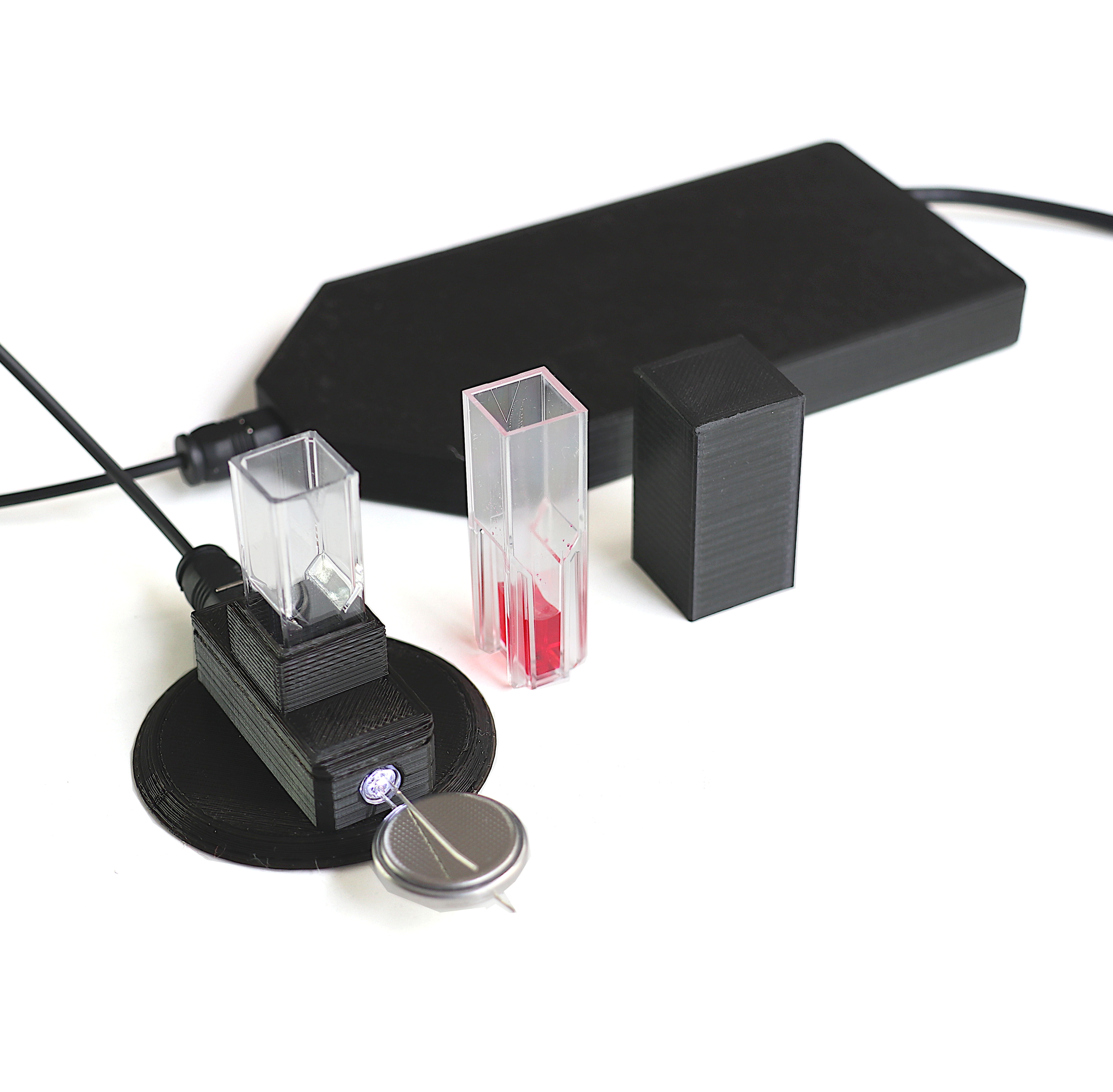
You have now completed the step by step guide. Start exploring the world with your optical spectrometer. Maybe you can even design new 3D printable add ons and contribute to this growing community project.
Have fun.
You want a kit, you can buy it here: 3D Printable Fiber Spectrometer Kit
Urs Gaudenz, GaudiLabs, 2021
